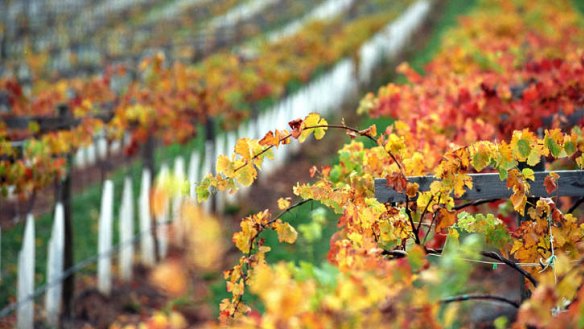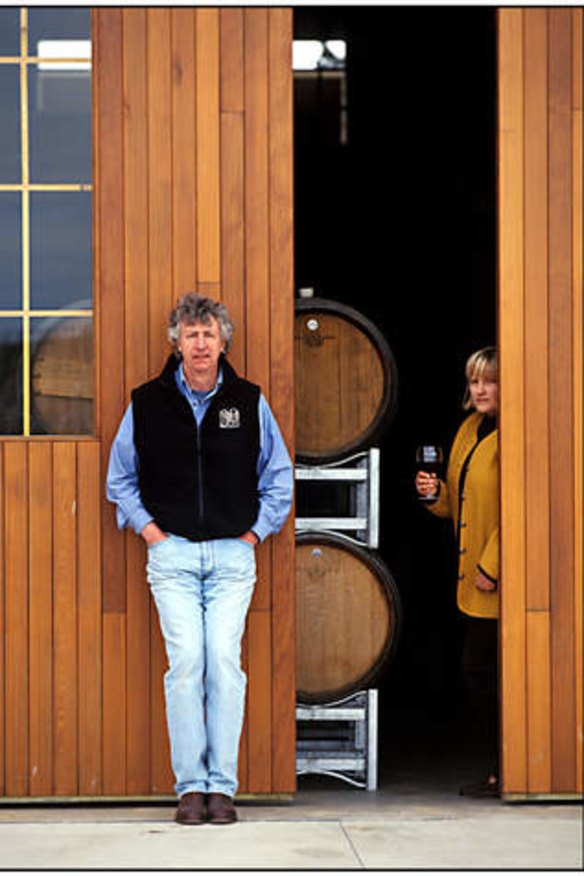All or nothing in a year from hell

Considering the dreadfully wet conditions leading up to the 2011 vintage in most of eastern Australia, it's a pleasant surprise whenever a really good wine comes along.
Some wineries, such as Curly Flat of the Macedon Ranges in southern Victoria, simply did whatever was necessary to save their grapes. If it meant labouring in the vineyard every day and missing out on sleep, they did it.
''We sprayed 16 times in the 2011 vintage instead of the usual nine times,'' Curly Flat owner and winemaker Phillip Moraghan says. The extra hours vineyard workers spent among the vines were the main cost: the vines were growing ''like triffids'' which necessitated much trimming - so the tractors could drive between the rows, but also to allow air and sunlight into the vine canopy, so important to controlling the spread of moulds.

''Every day we had people in the vineyard trying to keep the canopies under control,'' he says.
After vintage, Moraghan did the sums and estimated it cost an extra $1350 a tonne to grow the 2011 crop, compared with the average. The harvest at Curly Flat is about 100 tonnes, which means he had to find an extra $135,000.
It's not a very profitable way to produce wine, even at premium prices - Curly Flat charges $48 for its pinot noir and $42 for chardonnay at cellar door.
But, Moraghan says, ''It was either that or nothing. There would not be half a crop: if the disease got into us, we'd lose the lot.'' The cost was not a consideration when the alternative was no wine for a whole year. And Curly Flat is 100 per cent estate-grown: they don't buy a single berry.
Just how wet was it? In the six months of the 2010-11 growing season (October to March), Curly Flat had 738 millimetres of rain, compared with the long-term average of 298mm for the period. That's a surplus of 440mm and well over double the usual rainfall.
But it wasn't cold: the temperatures were slightly above the long-term average.
''Everyone around us was falling over, but we survived,'' Moraghan says. I put it down to our dedicated and very loyal team.''
When Moraghan speaks of spraying fungicides, he's not talking heavy-duty synthetic chemicals, but the relatively environment-friendly preparations, hydrogen peroxide, copper and sulphur. Curly Flat follows biodynamic protocols, but is not rigid about it, and Moraghan is not interested in certification. ''I'm not a fundamentalist,'' he says. ''I'll fight fire with fire, if I have to save the crop.'' So he keeps a drum of heavy-duty juice at the back of the shed, just in case.
Moraghan thanks his lucky stars that when he planted the vineyard in 1992 he used a lyre trellising system, which he chose after reading Richard Smart's book Sunlight Into Wine. He was worried about getting the grapes ripe in such a cool climate, and about fungal disease control, and the lyre seemed the answer. This trellis is not widely used in Australia, but Moraghan points to outstanding New Zealand chardonnay producer Kumeu River, which uses lyre in the very wet Auckland region.
I'd also add Paringa Estate on the Mornington Peninsula.
The proof of the pudding is in the eating, as they say, and the opportunity arose during a recent tasting of all Curly Flat chardonnays and pinot noirs produced to date.
The pudding was pretty impressive.
As expected, the 2011 pinot noir was lighter than usual, but it is still a high-quality wine and shows great refinement and subtlety. It will possibly not live as long as the excellent 2010 or 2009, but few people cellar Australian pinot anyway. Much of it is drunk young. As well, very little Curly Flat is sold through retailers. Direct sales and restaurants account for about 85 per cent of sales.
The 2011 chardonnay is even more successful: a triumph, no less. It is a great wine and - as also witnessed in other cool regions such as Yarra Valley and Mornington - the cool, wet conditions of the 2011 ''non-summer'' can be seen as a positive for chardonnay. Wines made from healthy grapes, harvested earlier than usual and with lower alcohol strength, are often wines of great finesse. The Curly Flat chardonnay is such a wine. I rated in 96/100, almost as good as the stellar 2010 (97 points).
I'm a little less convinced about the new super-cuvee pinot noir which debuted with the 2010 released earlier in 2013, and named The Curly. This wine was made with 100 per cent whole bunches in the ferment, and aged in 100 per cent new barrels. The 2010 is a big, highly structured wine with plenty of grip, and sells for a very reasonable $60 at the cellar door. The 2011 is much lighter and - tasted as a barrel sample - much stalkier than the 2010, and while it looks set to be a good wine when finished and bottled, surprisingly good, I'm not sure it will be great value or deserve the status of a ''reserve'' wine. But time will tell.
So, a dedicated perfectionist can survive, even in the vintage from hell. Almost as surprising as the quality at Curly Flat was the quantity. Despite the difficulties, the vineyard produced a normal-sized crop. So the bank manager will be happy too.
huon@huonhooke.com
